KDDI's Competitive Edge in Japan
Over the past 12 to 18 months the mobile division of KDDI, known here as ‘au,’ has been leading the way in Japan’s cellular marketplace. During a recent interview at the 3G World Forum, one European visitor asked the seemingly obvious question, “What is the main reason for their success?” 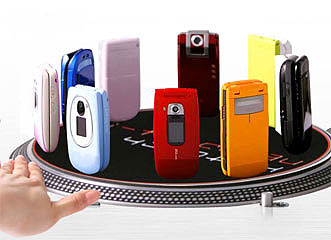
The reasonable answer is that it’s actually a combination of several factors, but one thing stands out. Compared to the NTT DoCoMo and Vodafone business models, au has a very tight focus on the domestic market. Their attention to detail in customer service and product offerings is not challenged by how the product mix and content offerings might fit into the company’s global strategy — and it shows. This has allowed au to take the lead in areas like GPS, flat-rate data and faster networks, all provided to the consumer on affordable price plans. The carrier now offers a full suite of popular and useful services ranging from Navitime, EZ auctions, EZ book, EZ channel, EZ games, and EZ FM to (recently introduced) mobile IM (‘Hello Messenger’), mobile blogging (‘DuoBlog’) and Lismo.
Looking again at au’s recent blitz of cutting-edge models at Designing Studio last week, just in time for Japan’s peak spring sales season, we were truly impressed; it will be a tough choice for shoppers. The phones and services strongly illustrate one of the most fundamental and important learnings about Japan’s mobile success that we’ve been trumpeting for years.


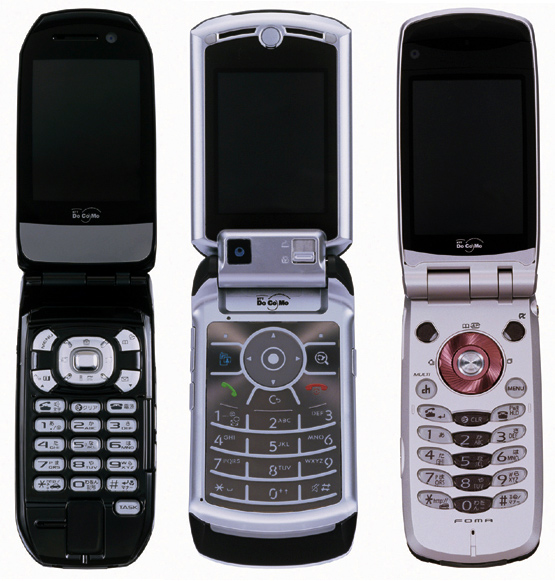
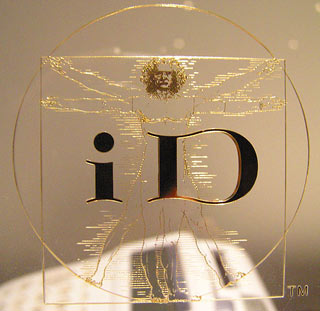 NTT DoCoMo held a press conference in downtown Tokyo this afternoon
NTT DoCoMo held a press conference in downtown Tokyo this afternoon 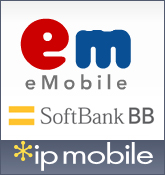 Back in 1999, when I was editing Computing Japan magazine, we ran an article entitled “
Back in 1999, when I was editing Computing Japan magazine, we ran an article entitled “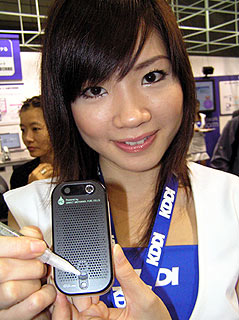
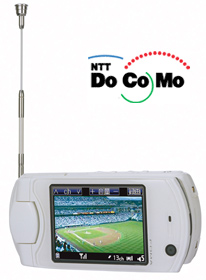 DoCoMo has developed their first mobile handset to receive terrestrial digital broadcasting and analog TV in one 3G Foma package. The P901iTV handset, by Panasonic, targets the start of mobile digital broadcasting in April, 2006 and will make its public debut at the upcoming CEATEC Japan 2005 trade show October 4 to 8 at Makuhari Messe convention center in Chiba. (WWJ will be on-hand to get photos and video!)
DoCoMo has developed their first mobile handset to receive terrestrial digital broadcasting and analog TV in one 3G Foma package. The P901iTV handset, by Panasonic, targets the start of mobile digital broadcasting in April, 2006 and will make its public debut at the upcoming CEATEC Japan 2005 trade show October 4 to 8 at Makuhari Messe convention center in Chiba. (WWJ will be on-hand to get photos and video!) Digging deep into Japan’s blog space over ice coffee this morning turned up interesting rumors (and some detailed specs) concerning DoCoMo’s next generation of 3G FOMA handsets. The dog days of summer is about the right time for an announcement from Big D’s Sanno Park Tower HQ on models slated for release sometime in Q3 and we’re willing to bet that these rumors may just have some substance behind them. While WWJ subscribers can log in for the full juice, we will say up front that more than one blog has mentioned 10 new models coming from all the usual suspects (NEC, Panasonic, Fujitsu, Sharp, etc.) plus a couple foreign-made entries for what should be called the 902i-series.
Digging deep into Japan’s blog space over ice coffee this morning turned up interesting rumors (and some detailed specs) concerning DoCoMo’s next generation of 3G FOMA handsets. The dog days of summer is about the right time for an announcement from Big D’s Sanno Park Tower HQ on models slated for release sometime in Q3 and we’re willing to bet that these rumors may just have some substance behind them. While WWJ subscribers can log in for the full juice, we will say up front that more than one blog has mentioned 10 new models coming from all the usual suspects (NEC, Panasonic, Fujitsu, Sharp, etc.) plus a couple foreign-made entries for what should be called the 902i-series.